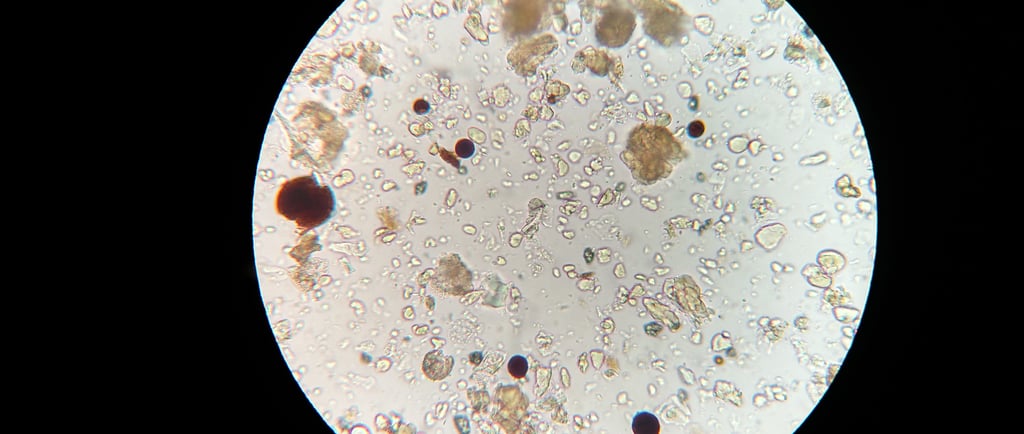The Hidden World of Microbes That Keep Earth Alive
Discover the unseen world of microbes, tiny, invisible life forms that quietly sustain every living thing on Earth.


There is an entire universe all around us, one that our eyes can’t see but our lives depend on. It exists in every drop of water, every breath of air, and even within our own bodies. This is the world of microbes tiny living organisms so small that millions of them could fit on the tip of a pin. Though invisible, they are the invisible architects of life, shaping the planet in ways we’re only beginning to understand. Without them, Earth would be silent and lifeless, stripped of the very forces that make it alive.
Long before humans, animals, or even plants appeared, microbes ruled the planet. They were Earth’s first inhabitants, born more than three and a half billion years ago in the warm waters of a young, fiery world. Back then, the planet was hostile and unstable, yet these microscopic pioneers found ways to survive. They fed on minerals, sunlight, and chemicals, slowly transforming Earth’s atmosphere. It was microbes that produced the first oxygen through photosynthesis, turning the skies blue and paving the way for all complex life to emerge. In a way, every tree, bird, and human owes its existence to these ancient, unseen ancestors.
Today, microbes are everywhere on the ocean floor, in volcanic vents, in the frozen ice of Antarctica, and deep within the soil beneath our feet. They thrive in places where no other life can survive. Some live in complete darkness, feeding on methane or sulfur. Others float through clouds, helping form raindrops. Even inside our own bodies, trillions of microbes are hard at work, helping us digest food, protect us from disease, and keep our immune systems strong. We are not alone in our own skin; we are walking ecosystems, carrying entire worlds of life within us.
Microbes form the foundation of every natural process on Earth. In the soil, they break down dead plants and animals, recycling their nutrients back into life. In the oceans, they create the oxygen we breathe and form the base of the marine food chain. Without them, forests would stop growing, rivers would turn toxic, and life as we know it would collapse. These tiny creatures are the planet’s quiet caretakers, working tirelessly in the shadows to keep everything balanced.
But the relationship between humans and microbes is complex. While most are harmless or beneficial, a few are deadly. Throughout history, certain microbes have caused devastating diseases plagues, pandemics, and infections that changed the course of civilizations. Yet, even these dark chapters remind us of how powerful these tiny beings truly are. They are neither good nor evil they simply exist, following the ancient rules of life and survival. And often, it’s humans who upset the balance that allows them to thrive peacefully.
What’s astonishing is how much we still don’t know about the microbial world. Scientists estimate that we’ve discovered only a small fraction of all existing microbial species millions more remain hidden, waiting to be understood. Each new discovery brings surprises: microbes that can eat plastic, survive radiation, or clean up oil spills. Some can even generate electricity, offering clues to future green technologies. Microbes may be the smallest creatures on Earth, but they hold the biggest potential for solving global challenges like pollution, food scarcity, and climate change.
Inside the human body, microbes form what scientists call the microbiome a living community that affects everything from digestion to mood. The gut, often called our “second brain,” contains trillions of bacteria that help regulate emotions, immunity, and even mental health. When this balance is disturbed, we fall sick; when it’s healthy, we thrive. It’s humbling to realize that our well-being depends on the harmony of microscopic organisms working quietly within us. We are, in a way, part human and part microbe.
Beyond our bodies, microbes shape the fate of the entire planet. In the ocean, tiny plankton absorb carbon dioxide, helping slow global warming. In the soil, bacteria nurture crops and purify groundwater. Even the air we breathe carries microbial fingerprints tiny travelers that move between continents with the wind. Life is deeply interconnected, and microbes are the invisible threads weaving it all together.
Yet despite their importance, we often forget about them. We live in a world that celebrates what can be seen—the big, the beautiful, the visible. But the real miracle of life happens in the invisible. The next time you walk in a forest, breathe in the air, or touch the earth, remember that you are surrounded by countless tiny workers keeping everything alive. They don’t seek attention, they don’t rest, and they don’t stop. They are the heartbeat of the planet.
The more we learn about microbes, the more they teach us humility. They remind us that life is not about size or strength it’s about connection. They show us that survival depends on cooperation, that every living thing, no matter how small, plays a vital role in the grand design of existence. Microbes existed long before us and will likely remain long after we are gone. They are the keepers of life’s secrets, the silent engineers who keep Earth breathing.
In their quiet, invisible way, microbes have written the story of our world every chapter, every turn, every new beginning. From the dawn of life to the modern age, they’ve been there, shaping, healing, and sustaining. They are the unseen guardians of our planet, the tiny architects of life itself. And though we can’t see them, their presence is everywhere, whispering a simple truth: that even the smallest life can hold the greatest power.